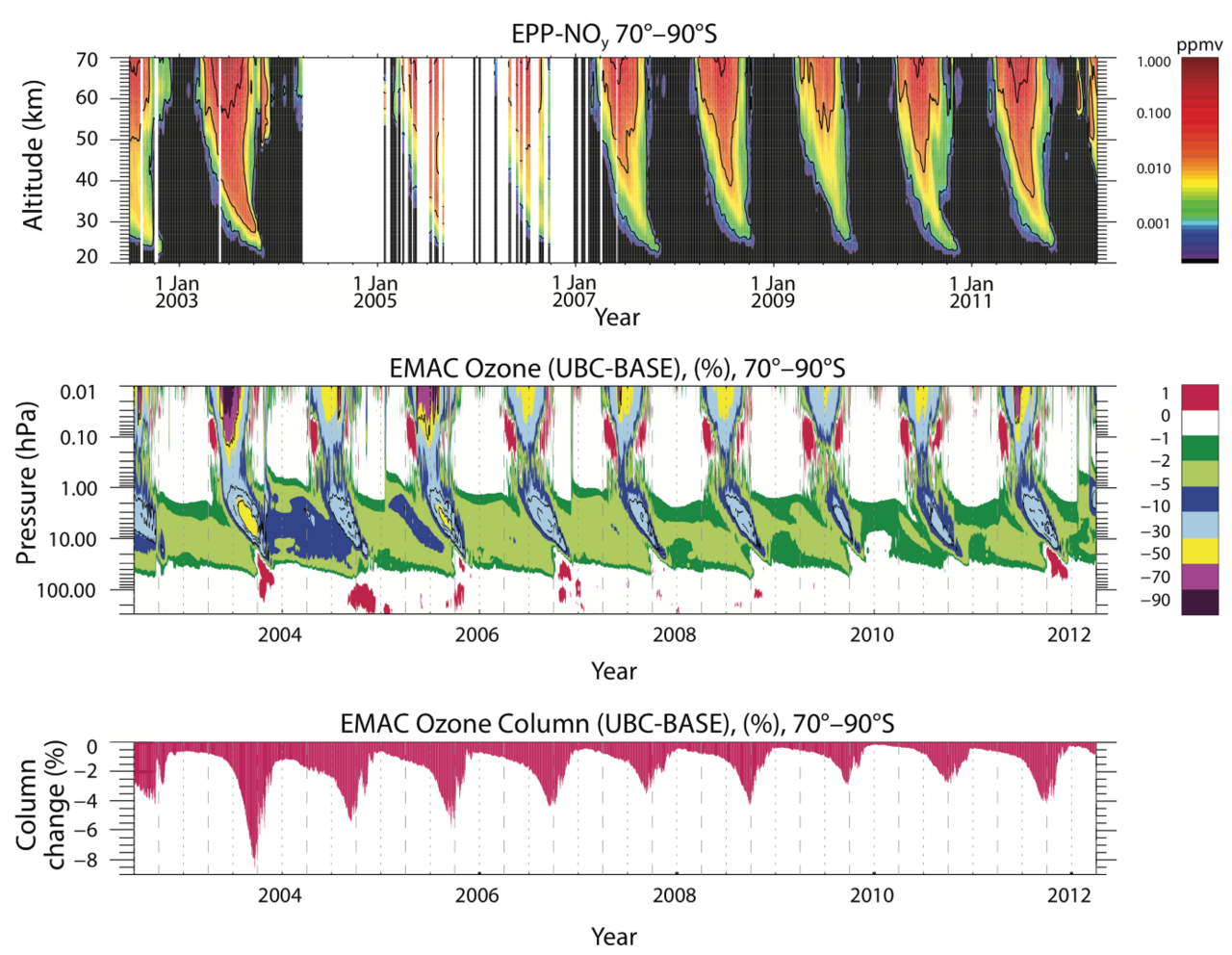Transient Solar Events and Space Weather
Solar variability is an important source of natural climate variability. The Aurora is a wonderful display of the impact of energetic particles on the upper atmosphere.
©Shutterstock
Energetic particles can also produce nitrogen oxides, that, when transported into the middle atmosphere, provide a coupling mechanism between solar variability, space weather and the middle atmosphere.
With the solar activity expected to decline during the coming decades, the assessment of solar influences on temperature and composition of the middle atmosphere is crucial for identifying the natural forcing contribution to long-term climate variability. One aspect of solar activity is Energetic Particle Precipitation (EPP), either directly by coronal mass ejections producing sporadically large fluxes of solar energetic particles or indirectly by the quasi-continuous, but highly variable, impact of the solar wind on the Earth’s magnetosphere. EPP causes enhanced ionisation in the polar upper mesosphere and lower thermosphere leading to the formation of nitrogen oxides. These can be transported down, affecting the stratospheric ozone layer, and potentially interfering with polar ozone recovery. This, in turn, can affect the regional weather systems in mid-to high latitudes. EPP is therefore recognized as an integral part of the solar climate forcing.

(top) From WMO, 2018: Temporal evolution of the NOy contribution produced by energetic particle precipitation (EPP-NOy) (in ppmv) at 70°–90°S taken by the Michelson Interferometer for Passive Atmospheric Sounding (MIPAS) (Adapted from Funke et al., 2014) . (middle and bottom) Ozone loss due to EPP as a function of pressure level (middle) and for the total ozone column (bottom) at southern high latitudes (70°–90°S). Shown is the percentage difference between EMAC model simulations with and without EPP impact. The EPP effect is prescribed as an upper boundary condition of NOy based on MIPAS observations; solar proton events (e.g., in October/November 2003 or January 2005) are prescribed by modelled ionization rates. Adapted from Sinnhuber et al. (2018).

